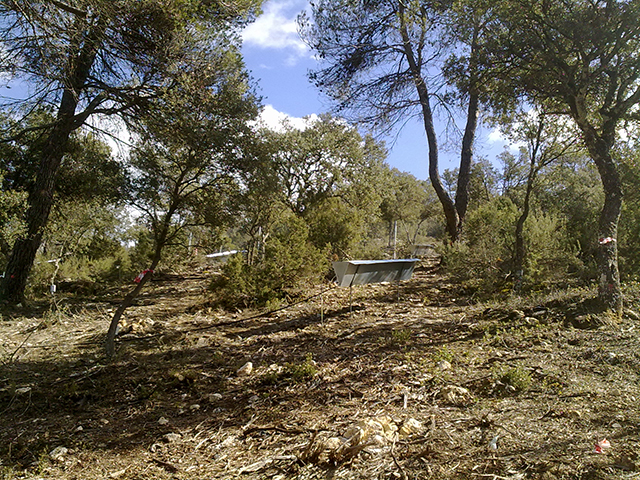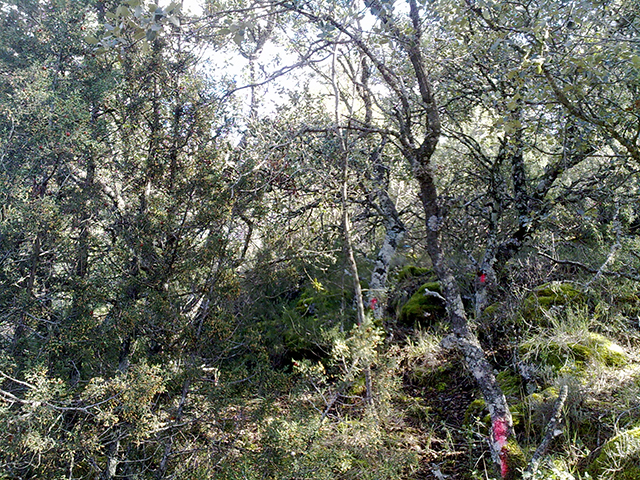Adaptive forest management does not adversely affect soil properties. It is necessary to articulate forest ecohydrological-based measures that help mitigate the impact of climate change on Mediterranean forests.
 These are the main findings of the study carried out by the researchers from the Universitat Politècnica de València, Cristina Lull (Campus Gandia), Inmaculada Bautista, Antonio Lidón, Antonio del Campo, María González and Alberto García Prats, all members of Forestry Science and Technology (Re-ForeST) group of the IIAMA-UPV. Their work has been published in the scientific journal “Forest Ecology and Management“.
These are the main findings of the study carried out by the researchers from the Universitat Politècnica de València, Cristina Lull (Campus Gandia), Inmaculada Bautista, Antonio Lidón, Antonio del Campo, María González and Alberto García Prats, all members of Forestry Science and Technology (Re-ForeST) group of the IIAMA-UPV. Their work has been published in the scientific journal “Forest Ecology and Management“.
The study is based on the premise that organic carbon reserves in the soil have an important role in the maintenance of ecosystems as a source of nutrients and energy for soil microorganisms, which have an essential role in the nutrient cycle.
“The biological and biochemical properties of soil are essential for the decomposition of organic matter. However, these properties can be affected by forest treatments that are considered ‘sustainable’ when the soil properties are maintained or improved,” explains the co-author of the study, Cristina Lull from Campus Gandia.
For this reason, the study assessed the effects of adaptive forest management on different soil properties.
RESEARCH UNDERTAKEN AND RESULTS
The study was carried out in a marginal semi-arid forest located in the “La Hunde” public forest, classified as “one of the few well-preserved oak forests in the Valencian Community and the largest in the province of Valencia,” says the professor.
The research consisted of analyzing the effect of a silvicultural treatment on the properties of the mineral soil and the mulch in relation to the carbon cycle and on the enzymatic activity of the soil.
 Thus, the data obtained was compared to an area that was unmanaged over a period that varied from five months to seven years after silvicultural treatment. Specifically, the untreated area has a high density of holm oaks (1059 ft/ ha) and in the treated area it was reduced to 289 ft/ha, in addition to eliminating the bush mass.
Thus, the data obtained was compared to an area that was unmanaged over a period that varied from five months to seven years after silvicultural treatment. Specifically, the untreated area has a high density of holm oaks (1059 ft/ ha) and in the treated area it was reduced to 289 ft/ha, in addition to eliminating the bush mass.
“In the early stages, in the treated plot we detected a slightly higher content of sequestered organic carbon in the soil and soluble organic carbon in water in the mineral soil, probably due to the remains of the smaller cuttings that were left behind in the treated plot during the silvicultural treatment. However, seven years after the treatment, we observed that it did not affect the carbon of the soil, nor the respiration of the soil measured by laboratory incubations, nor the enzymatic activities, specifically neither the phosphatase activity of the phosphorus cycle nor the urease of the nitrogen cycle, supporting the sustainability of this type of forest management,” points out the researcher.
All of this highlights the important work that has been carried out by the Forestry Science and Technology (Re-ForeST) group over the last decade, with different studies and research projects that seek to improve the resilience of semi-arid forests against climate change.
“This study is complemented by others carried out in the same area by the Re-foreST group concerning the hydrological characterization of the forest structure for the implementation of adaptive forestry, as well as the study of forest measures based on ecohydrology for adaptation to climate change. All of this with a sole purpose: to promote practices that improve the adaptation and conservation of our forests,” concludes Cristina Lull.
More information:
Source: Luis Zurano, Scientific Communication Unit
of the Universitat Politècnica de València
You can follow him on Twitter @luiszurano











